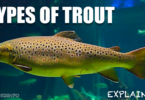Sharks are often mislabeled as ruthless killers of the deep sea, largely due to exaggerated media images and movies that portray them as heartless creatures. But those shark concepts can be recognized in this severity from the tragedies that occurred on the Jersey shore in 1916 and changed forever our perception of these magnificent creatures. In this article, we will examine the terrible incidents of shark attacks in 1916 and examine how they contributed to the bad rap that sharks still endure today.
The 1916 Shark Attacks That Gave Sharks a Bad Rap
To truly understand the significance of the 1916 shark attacks, we need to go back and look at what was going on in American society in the early 20th century. In the 19th century, America was undergoing urbanization and rapid industrialization. As cities grew, people began to travel to the beach for relaxation. This period saw an increase in recreational swimming and beach holidays. No one could have foreseen that their sunny summer getaway would quickly turn into a nightmare.
The Attacks Begin
Sharks were usually seen as distant threats, lurking in the deep ocean. The idea of a shark attacking a person at the beach was almost unheard of and dismissed as a rare and unlikely occurrence.
Incident 1: Charles Vansant
The first shark attack in 1916 occurred on July 1st when Charles Vansant, a 25-year-old vacationer from Philadelphia, decided to take a bath in the water near Beach Haven. Sadly, he was attacked by a shark and injured his leg. Bystanders rushed to their aid, but the sharks had already caused irreparable damage.
Incident 2: Charles Bruder
Less than a week later, on July 6, Spring Lake, not far from Beach Haven, was attacked again. Hotel bellman Charles Bruder was swimming not far from shore when he too fell among the sharks. Despite desperate efforts to save him, Bruder died of his injuries, becoming the second victim of the winter’s craving for sharks.
Incident 3: Lester Stilwell
The most tragic incident occurred on July 12, 1916, on a beach near the small town of Matawan, far inland from the Jersey shore. 13-year-old Lester Stilwell was playing in the water with friends when a shark attacked Lester. 11-year-old Watson Stanley Fisher and his friends tried to save him, but the sharks squeezed Lester’s legs and dragged him underwater. Fisher’s heroic efforts to save his friend resulted in his tragic death.
The Panic Spreads
As news of this horrific attack spread, fear and panic gripped the coastal communities. Locals and tourists began to avoid the beach, and cities along the Jersey shore have taken extreme measures to protect their residents, employing armed soldiers and even offering rewards for shark kills. The media feared the public by portraying sharks as merciless killers, and the attacks became sensational.
The Experts Were Called
The public demanded answers and solutions, so experts were called in to shed light on the mysterious attack. The first person to explore the situation was a respected marine biologist, Dr. John T. Nichols. He concluded that a large shark, likely a great white, was responsible for the maximum number of attacks. Nichols’ discovery only added to the fear surrounding these top predators.
The Search for The Culprit
To counter the perceived threat, fishermen and officials launched a shark hunt. Thousands of sharks were killed, but the reason for the attack remains a mystery. Finally, two days after the Matawan attack, on July 14, a great white shark over seven feet long was caught on the bay where Lester Stilwell died.
Impact On Shark Perception
The shark attack of 1916 had a lasting effect on how people viewed them. Before these incidents, sharks were not seen as a serious threat to humans. But in the summer of 1916, that view changed completely. Media coverage and public reaction reinforced the image of sharks hiding in the water, waiting to strike.
The Modern Understanding of Shark Behavior
The fear and fascination with sharks inspired by the 1916 invasion continue to influence popular culture today. Many books, movies, and television shows have portrayed sharks as villains, reinforcing the idea that they are bloodthirsty monsters.
Movies such as “Jaws,” released in 1975 and directed by Steven Spielberg, capitalized on this fear and became one of the most spectacular and frightening shark movies of all time. The legacy of one of the 1916 invasions poured into our collective consciousness and shattered our perception of sharks as mindless killers.
Conclusion
The shark attack on the Jersey shore in 1916 was a sad and terrible chapter in the history of shark-human interaction. These events left an indelible mark on our perception of sharks, cementing them as creatures to be feared and condemned. But as we learn more about these amazing creatures, let’s slowly shed the irrational fears these events instill in us and replace them with a more enlightened and respectful approach. While the legacy of the 1916 attacks endures, it is our responsibility to move beyond fear and work towards coexisting with sharks in a way that benefits both humans and these remarkable apex predators.







